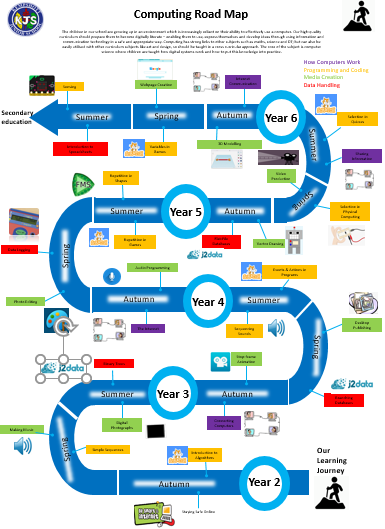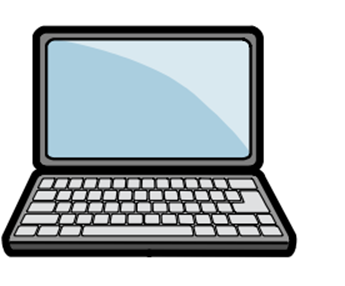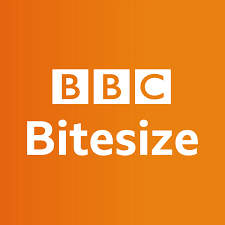Computing
Subject leader - Mr M.Giles
Subject Champions - Alfie W (yr3), Chloe C (yr4), George G (yr5), Charlie T (yr6)
Intent
Computing at Kempshott Junior School intends to develop children’s skills, preparing them for the digital world that they are already a part of. We aim to ensure that children are learning through a modern, ambitious and relevant education in computing. We want to equip pupils to use computational thinking and creativity that will enable them to become active participants in the digital world. It is important to us that the children understand how to use the ever-changing technology to express themselves, as tools for learning.
We work to ensure that they understand the advantages and disadvantages associated with online experiences, we want children to develop as respectful, responsible and confident users of technology, aware of measures that can be taken to keep themselves and others safe online.
Within lessons work is pitched at a level which challenges pupils, some may require more scaffolds and support. Others will be more digitally literate and require further challenges or time for exploration.
Implementation
Our scheme of work for Computing follows the ‘Teach Computing’ Curriculum and covers all aspects of the National Curriculum. This scheme was chosen as it has been created by subject experts and based on the latest pedagogical research. It provides an innovative progression framework where computing content (concepts, knowledge, skills and objectives) has been organised into logical learning steps.
The curriculum aims to equip young people with the knowledge, skills and understanding they need to thrive in the digital world of today and the future. The curriculum can be broken down into 3 strands: computer science, information technology and digital literacy, with the aims of the curriculum reflecting this distinction.
The national curriculum for computing aims to ensure all pupils:
• can understand and apply the fundamental principles and concepts of computer science, including abstraction, logic, algorithms and data representation (Computer science)
• can analyse problems in computational terms, and have repeated practical experience of writing computer programmes in order to solve such problems (Computer science)
• can evaluate and apply information technology, including new or unfamiliar technologies, analytically to solve problems (Information technology)
• are responsible, competent, confident and creative users of information and communication technology. (Digital literacy)
Staff are encouraged to make links to computing from other subjects and exploit opportunities that they have to incorporate the digital skills that children have developed in computing lessons to other areas of the curriculum.
A key part of implementing our computing curriculum was to ensure that safety of our pupils is paramount. We take online safety very seriously, and we aim to give children the necessary skills to keep themselves safe online. Children have a right to enjoy childhood online, to access safe online spaces and to benefit from all the opportunities that a connected world can bring them, appropriate to their age and stage.
In addition to work children complete as part of the PSHE curriculum and their discreet computing lessons children also build online resilience through the use of the ‘Project Evolve – Education for a Connected World’ framework. The framework aims to support and broaden the provision of online safety education, so that it is empowering, builds resilience and effects positive culture change. The objectives promote the development of safe and appropriate long-term behaviours, and support educators in shaping the culture within their setting and beyond. This work is tailored to the individual class or year group as a result of issues that have occurred, or formative assessment quizzes surrounding online safety that the children have completed.
To ensure we can teach the curriculum confidently there is a variety of hardware and software available to teachers, this includes:
• 3 sets of 20 laptops
• A class set of iPads
•20 crumble controller sets
• 20 microbit controllers
• AirServer (enabling the iPad to be used as a visualiser)
• An interactive whiteboard
The children are all provided with a Google Education account that they can use to access work and resources in and out of school.
Harrap ICT provide the school with technical support
Impact
By the end of KS2 pupils are expected to know, apply and understand the matters, skills and processes that form our programme of study. At Kempshott we use a mixture of formative assessment during a unit to ensure pupils are ready to move onto the next session, and summative assessment which is completed at the end of the unit to ensure pupils have retained the skills and knowledge.
Within a lesson the children are regularly given feedback and ways to ensure they know how they can improve their work.
The subject leader regularly seeks feedback from staff to find out what they think has worked well within a unit and which areas could need refining.
Pupil conferencing and book looks enable the subject leader to gauge children's understanding and enjoyment of the subject.
Curriculum Overview Curriculum Progression
Useful Websites
| Find resources, games and activities to do with all aspects of the KS2 Computing, including Digital Literacy and E Safety. | Scratch provides you with lots of different coding projects and games to help improve your coding skills. | Blockly games provides you with a range of different games that uses coding blocks to help you complete the challenges. |







